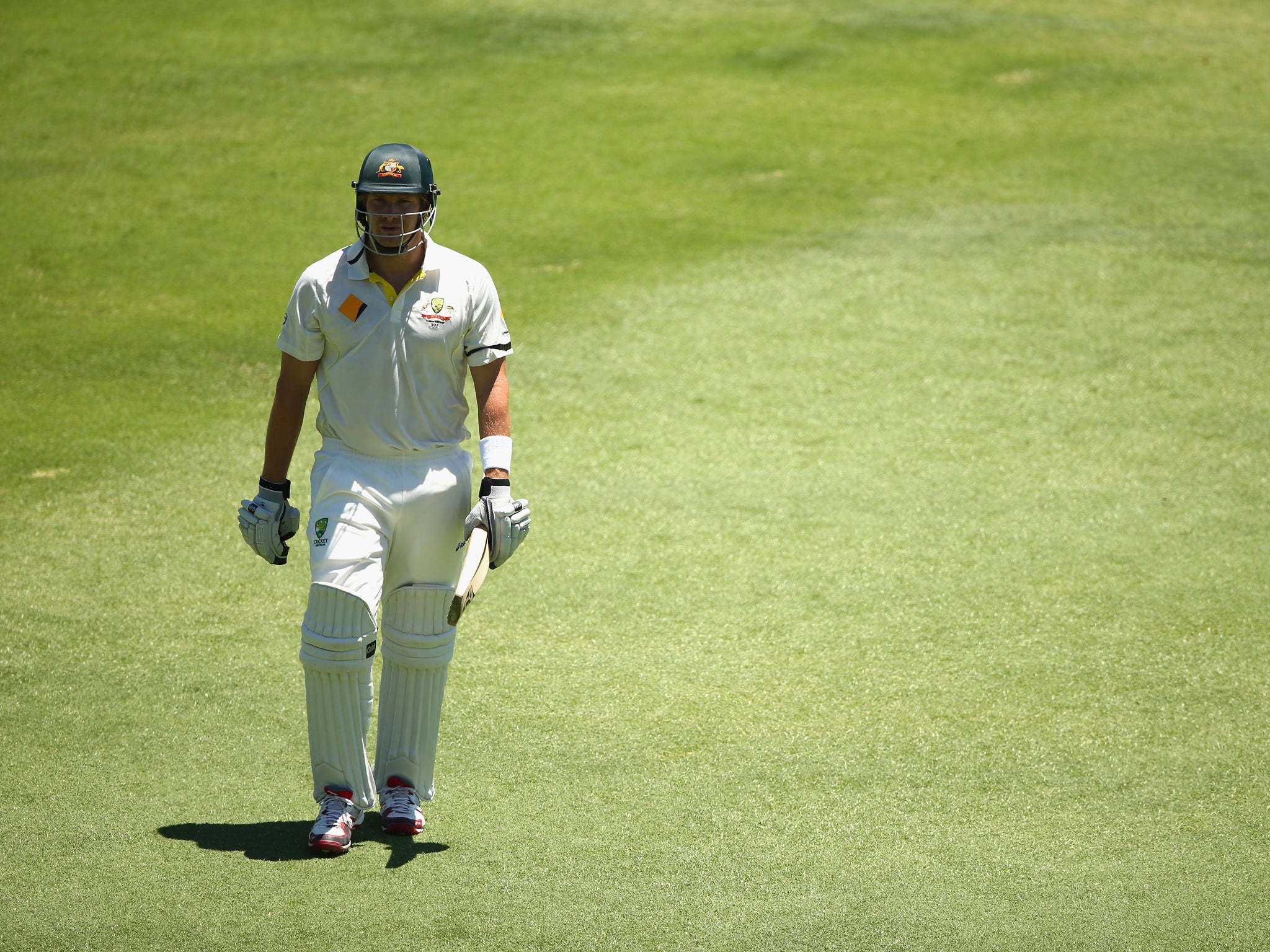Ashes 2013/14: Shane Watson’s flat-footed dismissal typical of a batsman for whom there is a yawning gulf between his performance and his potential
The Aussie Angle: No one promises more nor falls short so often. He is Australia’s biggest tease

There was a telling statistic in Shane Watson’s batting record as he entered his 49th Test on Friday.
Watson had 3,077 career runs and sat in the bottom reaches of Test cricket’s top 100 run-scorers after 48 matches.
Watson’s runs tally exceeded outstanding batsmen such as countrymen Adam Gilchrist and Mark Waugh, as well as Ashes opponent Ian Bell, yet the most revealing element in this snapshot was his average.
The big right-hander returned 35.37 an innings to be comfortably last on the list.
The 99th batsman was former Australian captain Kim Hughes whose average was more than three runs better despite playing much of his cricket against the emerging West Indies pace juggernaut.
Watson’s place at the foot of that ladder, probably more than any other statistical measure, revealed the yawning gulf between his incredible potential and his modest performance level.
Watson is a tease, the biggest in Australian cricket.
No one promises more nor falls short so often. He is an enigma, a complete mystery.
His versatility and occasional game-changing surges have made him a favourite of numerous selection panels over the past decade but one half-century and one wicket approaching the halfway point in the Ashes series may be starting to furrow selection brows.
No other Australian player offers his potential combination of front-foot carnage with the bat and incisive 85mph swingers but they only have value if he can use them to bolster the team cause.
There was a palpable air of concern in the England camp at Trent Bridge this year when Watson’s bright start gave the Australian run chase the perfect impetus.
It was a false dawn. The hard graft against the new ball completed and a change of gear in the offing, a straight ball soon accounted for the muscular opener.
Watson’s 18 yesterday was representative of his career.
There was the crashing cover drive for four, the smooth flick off the pads and the booming straight hit.
He appeared capable of eviscerating the England attack on a true and lucrative surface.
Then came the surrender when a big score was beckoning.
Stuart Broad had just started his second spell after being swapped to the River End here at the Waca.
James Anderson had found more bounce from that southern end than Broad had produced from the north but it took the tall seamer little time to have an impact.
His third delivery was well outside off stump, on a length or just short of it and gaining enough bounce to be a handful for the batsman.
Like generations of flat-footed visitors to the Waca, whether internationals or domestic players from the eastern States of Australia raised on lower and slower surfaces, Watson chased hard at temptation but only managed to skew an edge above second slip where Graeme Swann hauled in a sharp chance.
Sitting in the ABC Radio commentary box, the former Australia Test player Geoff Lawson was aghast. “Too wide, no footwork and not full enough,” Lawson groaned.
Watson appears to have solved the lbw problem that afflicted him in India and England this year but only by finding new mode of dismissal.
He is averaging 19 so far this summer. It is the eighth time in 20 series that he has returned batting averages in the teens or lower.
Watson’s place will no doubt be safe when the Ashes caravan moves to Melbourne next week.
It was the site of his first Test century – after being dropped on 99 – but a record of just two more triple figure scores in 90 innings, including 176 in the dead rubber at The Oval this year when one-Test wonders Simon Kerrigan and Chris Woakes provided much of the fodder for his career-high score, suggests that selection patience is slowly but inexorably drawing to an end.
Join our commenting forum
Join thought-provoking conversations, follow other Independent readers and see their replies
Comments
Bookmark popover
Removed from bookmarks